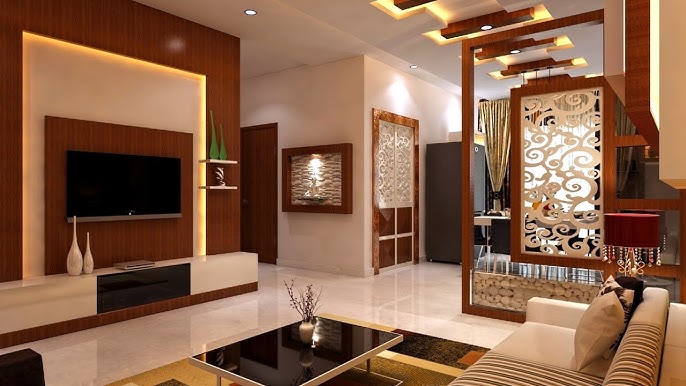Discover miami luxury interior design for a sophisticated and stylish lifestyle.
Discover miami luxury interior design for a sophisticated and stylish lifestyle.
Blog Article
Transform Your Home With Necessary Concepts of Interior Decoration and Aesthetic Appeals
By understanding the effect of shade concept and the importance of appearance and patterns, one can develop spaces that are not just aesthetically enticing but additionally deeply individual. Attaining this balance entails more than simple design; it includes a calculated setup and a keen understanding of just how each element engages within an area.
Recognizing Shade Concept
Comprehending the principles of color theory permits developers to produce spaces that reverberate psychologically with passengers while fulfilling useful needs. Each classification plays a critical function in developing consistency within a space.
The psychological influence of colors is extensive; cozy colors such as reds and oranges stimulate energy and heat, while trendy tones like blues and environment-friendlies advertise calmness and peace. In addition, using complementary colors enhances aesthetic interest, developing striking contrasts that can raise a room's allure.
Neutral shades, on the various other hand, act as a functional backdrop, enabling various other layout elements to shine. It is necessary to take into consideration elements such as illumination and the room's function when picking a color combination, as these can change the assumption of colors throughout the day.
Eventually, a well-considered color design can transform a space, promoting a feeling of comfort and style that lines up with the inhabitants' choices. Proficiency of color theory is, therefore, a crucial skill for any type of indoor developer aiming to develop unified and welcoming environments.
Achieving Balance in Style
Just how can designers achieve a sense of balance in their rooms? Accomplishing balance in style is basic to creating harmonious interiors. Developers can utilize 3 key sorts of equilibrium: balanced, unbalanced, and radial. Symmetrical balance includes setting up aspects uniformly around a main factor, fostering a feeling of order and tranquility. This type frequently features pairs of furnishings or artwork, boosting aesthetic stability.
Asymmetrical balance, on the other hand, depends on varying components that still accomplish a natural appearance. This strategy enables even more dynamic and casual setups, supplying passion while keeping equilibrium. By carefully selecting differing dimensions, shades, and appearances, designers can develop a visually engaging room that really feels balanced yet energised.
Radial equilibrium stresses a central centerpiece with components radiating outward. This style is commonly seen in circular layouts, where furniture and decor develop a natural surround that attracts the eye inward.
Ultimately, accomplishing balance needs thoughtful consideration of range, proportion, and the partnerships between components. Architecture Firm. By skillfully using these balance concepts, developers can transform areas into settings that feel both visually pleasing and functionally unified, improving the total experience for owners
Significance of Spatial Recognition

A keen sense of spatial understanding enables developers to recognize prime focus within an area, leading the visitor's focus to key functions while preserving a general sense of unity. It likewise helps in the critical positioning of illumination, which can significantly influence the perception of area and state of mind. Furthermore, recognizing spatial relationships enables the developer to provide to the details demands of citizens, making sure that each area serves its desired function without jeopardizing aesthetics.
Eventually, spatial understanding is essential for making the most of the capacity of any type of interior area. By thoroughly taking into consideration the interplay between measurements, format, and function, developers can develop atmospheres that not just satisfy sensible demands yet additionally stimulate a feeling of comfort and beauty, improving the overall living experience.
Incorporating Structure and Patterns
Welcoming a diverse variety of appearances and patterns can significantly boost the visual and tactile charm of an indoor space. The critical use numerous products-- such as wood, steel, textile, and rock-- develops depth and rate of interest, making a room feel much more inviting and dynamic. As an example, combining smooth surface areas with harsh structures can develop a balance that draws the eye and engages the detects.
When integrating patterns, consider both range and repetition. find out here Large patterns can work as centerpieces, while smaller, subtle styles can match various other components without frustrating the area. Layering patterns, such as pairing flower paddings with candy striped tosses, includes intricacy and a feeling of harmony if implemented thoughtfully.
It is also crucial to keep a natural shade palette, guaranteeing that textures and patterns function together instead than compete for attention. By choosing a few vital structures and patterns, you can create a combined visual that reflects your personal style while enhancing the overall atmosphere of the space. Ultimately, the careful unification of these elements can transform a mundane space into an advanced atmosphere rich with personality and warmth.
Individualizing Your Room
Producing a room that shows your personality is essential to accomplishing a truly inviting setting. Personalization in interior decoration enables you to infuse your special design and interests into your home, changing it from a simple sanctuary into a shelter her response that talks to that you are. Begin by choosing a shade combination that resonates with your feelings-- bold tones can stimulate, while soft tones offer harmony.
Incorporate artwork and decoration that reflect your interests, whether it be travel, nature, or abstract ideas. Displaying personal collections, such as publications, photos, or souvenirs, can stimulate valued memories and produce focal factors within a space. In addition, take into consideration personalizing practical items, like upholstered furniture, to line up with your visual preferences.

Final Thought
In verdict, the improvement of a home through the necessary principles of interior decoration and looks demands a comprehensive understanding of shade concept, equilibrium, spatial awareness, structure, and customization. Each element adds significantly to producing an unified and useful living setting - miami luxury interior design. By attentively integrating these principles, individuals can improve the aesthetic allure visit homepage and psychological vibration of their spaces, eventually cultivating a home that mirrors unique identities while providing comfort and practicality
Report this page